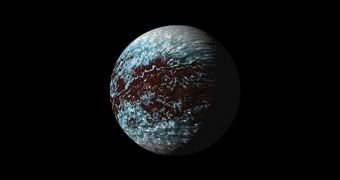One of the main goals in astronomy today is the detection of a planet that resembles Earth in all aspects. But the search is also revealing weird objects, such as the exoplanet 55 Cancri, which is the densest super-Earth-class object ever discovered. A new study sheds more light on its properties.
The work was carried out by an international group of astronomers. The experts say that this exoplanet is one of the most exotic objects they came across, given that it displays a density almost equal to that of lead.
In terms of size, 55 Cancri is about 60 percent larger than Earth, but no less than 8 times as massive, and two times denser. This means that the gravitational pull on its surface is tremendously intense.
This is the densest planetary object ever found, astronomers say, which is weird because it's very unusual for a solid planet to reach this level of density. The new study was carried out by experts from the United States and Canada.
It was a collaborative effort that involved the Massachusetts Institute of Technology (MIT), the University of British Columbia (UBC), the Harvard-Smithsonian Center for Astrophysics (CfA) and the University of California in Santa Cruz (UCSC).
Details of the exoplanet were taken from observations carried out with the MOST (Microvariability & Oscillations of STars) space telescope, a satellite belonging to the Canadian Space Agency (CSA).
A study of the object's properties has already been posted in the online journal arXiv, and will also appear in print in an upcoming issue of the esteemed Astrophysical Journal Letters.
The planet, which orbits the star 55 Cancri A, is located very close by, at only 40 light-years. It orbits its parent star in just under 18 hours, which means that it's located extremely close to it. According to astronomers, this means that the exoplanet is governed by tidal forces.
“You could set dates on this world by your wrist watch, not a calendar,” explains Jaymie Matthews, who is an astronomer at UBC, in Canada.
“Because of the infernal heat [around 2,700 degrees Celsius], it's unlikely that 55 Cancri e has an atmosphere. So this is not the type of place where exobiologists would look for life,” adds MIT expert Josh Winn, the lead author of the new investigation.
“The brightness of the host star makes many types of sensitive measurements possible, so 55 Cancri e is the perfect laboratory to test theories of planet formation, evolution and survival,” he concludes.

 14 DAY TRIAL //
14 DAY TRIAL //